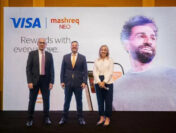Emerging technologies have changed the way the world consumes news. As media’s reach and influence evolves, and the nature of the bonds that audiences have with traditional media and with digital media grow with it, there is need for legacy media to understand the advantages it has, and the gaps it must address, to remain relevant.
“A revolution is indeed happening in the media sector, brought about by the rapid technological changes that have unleashed a new kind of media outlets – a kind that has uninterrupted, real-time daily interaction with audiences. This has drastically changed the way we consume news, the sources we rely on to get it and the way we analyse it,” Noura bint Mohammed Al Kaabi, Minister of Federal National Council Affairs, Chairwoman of the Media Zone Authority – Abu Dhabi and twofour54.
Ms Al Kaabi pointed out that even the type of content that is presented to audiences has evolved with infographics, summaries and aggregators, that allow users to learn major news in a matter of minutes. This leaves traditional media lagging behind and struggling to keep up with their digital counterparts. “Despite the challenges that traditional media is facing in the competition with digital media, journalism will not vanish any time soon. Traditional media enjoys advantages over its digital rivals – most notable of which are credibility and reliability. Editors need to correctly categorize the news, and be fully aware of who their target audience is and how to reach them,” she said.
Mona Al Marri, Director-General of the Government of Dubai’s Media Office seconded this view, asserting that there is a gap between the news that traditional media cover and what social media and citizen-journalists deliver in terms of accuracy and transparency, insisting that traditional media remain a more reliable source of information.
Ms Al Marri urged traditional media to address this gap and update the technologies traditional media companies use, citing Dubai as an example of successful adoption of innovation and technology, referring specifically to the creation of Dubai Internet City and Dubai Media City in close proximity of one another.
The current media revolution threatens the organizations that fail to keep up. “Some independent media outlets will have to close shop leading to centralization of information sources in the traditional media sector. News consumption patterns have evolved as the number of news sources has multiplied, although their reliability remains questionable,” added Dr. Claire Wardle, Director of Research at the Tow Center for Digital Journalism at Columbia University explaining that media organizations need to develop new models for distribution and subscriptions to be able to overcome the challenge of falling revenues.
The significance of investing in human capital cannot also be neglected while preparing for the future of media. “A journalist must possess the ability to ask the right questions – the questions that grab the reader’s attention and improve the quality of the content. This can make traditional media more sustainable and competitive, seeing as there is great demand for reliable news that deal with important topics such as energy and poverty, and that is supported by evidence,” said Aaron H. Sherinian, Chief Communication and Marketing Officer of the United Nations Foundation.
The future of media came under discussion at the sidelines of the inaugural Annual Meeting of The Global Future Councils 2016, that took place in Dubai on November 13, 2016.





